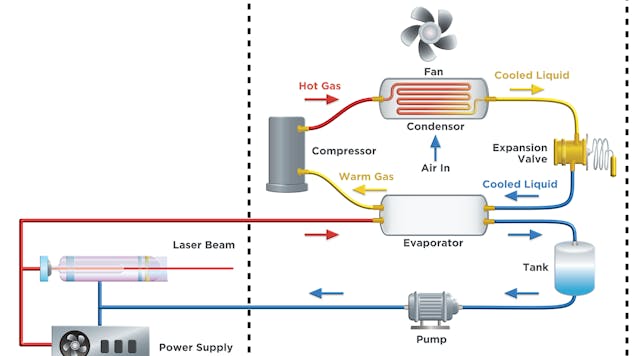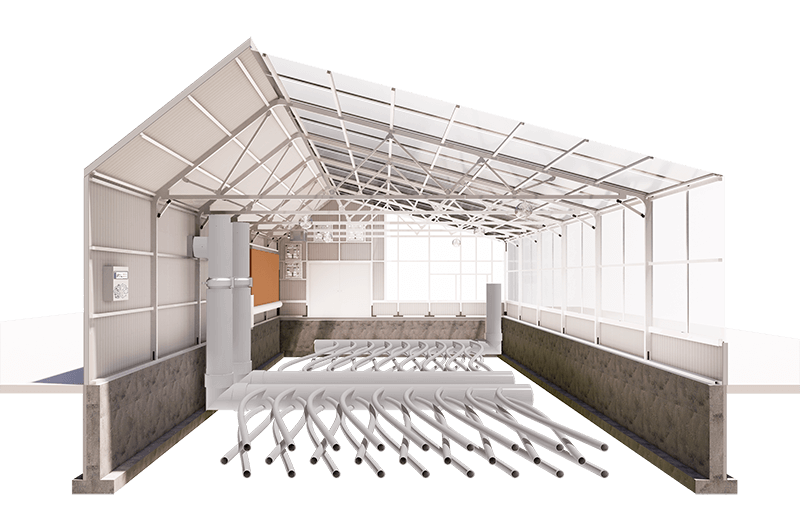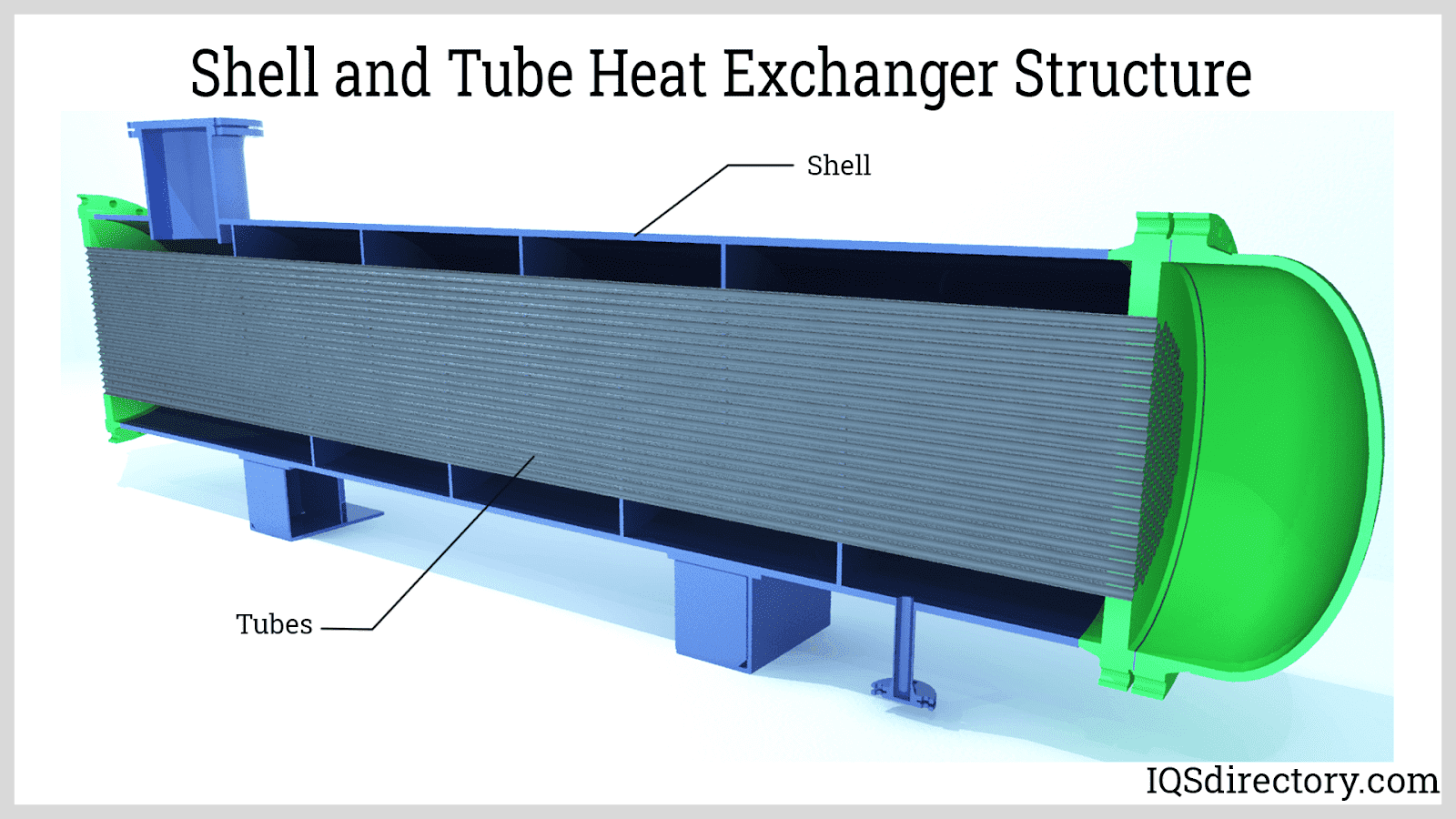Innovations in Heat Transfer Solutions: What You Need to Know for Optimal Performance
Innovations in Heat transfer systems are changing efficiency across numerous industries. Advanced products like graphene and nanofluids promise considerable renovations in thermal conductivity. The integration of IoT and machine understanding provides opportunities for real-time surveillance and boosted power efficiency. Nonetheless, the landscape of thermal monitoring is rapidly evolving (DVS Heat Transfer Systems). Comprehending these advancements is necessary for accomplishing optimal system performance and sustainability in the future. What certain innovations are forming this improvement?
Emerging Products for Boosted Heat Transfer

Advanced Heat Exchanger Layouts
While conventional Heat exchangers have actually served their purpose in numerous applications, advanced styles are currently arising to fulfill the increasing needs for efficiency and performance. These innovative designs, such as plate, shell-and-tube, and finned-tube Heat exchangers, integrate enhanced area and improved circulation patterns to increase thermal transfer prices. On top of that, portable layouts permit minimized area needs without jeopardizing efficiency. Advanced products, such as composites and corrosion-resistant alloys, furthermore improve longevity and performance under severe conditions. Simulation modern technologies and computational liquid characteristics are progressively utilized to refine these layouts, making sure peak Heat transfer features. As markets seek to reduce energy consumption and maximize outcome, the fostering of innovative Heat exchanger designs is pivotal in attaining these objectives.
The Role of Nanotechnology in Heat Transfer
Nanotechnology plays an important role in enhancing thermal conductivity within Heat transfer systems. By manipulating products at the nanoscale, researchers have accomplished significant improvements in energy efficiency. These innovations not only enhance efficiency yet likewise add to more sustainable energy solutions.
Improved Thermal Conductivity
Significant innovations in thermal conductivity have actually emerged through the application of nanotechnology, changing Heat transfer systems throughout various markets. By incorporating nanoparticles right into Heat transfer fluids and products, scientists have actually attained remarkable boosts in thermal conductivity. These nanoparticles, such as carbon nanotubes, graphene, and metal oxides, boost the Heat transfer homes as a result of their high surface location and unique thermal features. The resulting composites display improved efficiency in applications ranging from electronic devices cooling down systems to sustainable energy technologies. The ability to tailor the size, shape, and make-up of nanoparticles allows for optimized thermal administration solutions. Because of this, nanotechnology proceeds to play a critical duty in the growth of more reliable and efficient Heat transfer systems, paving the way for boosted commercial applications.
Energy Effectiveness Improvements

Combination of IoT in Heat Transfer Solutions
The assimilation of IoT in Heat transfer systems presents the execution of clever sensors that enhance functional efficiency. These sensors enable real-time data monitoring, enabling prompt modifications and optimizations. This review technical innovation has the prospective to considerably improve performance and energy monitoring in Heat transfer applications.
Smart Sensors Application
As Heat transfer systems develop, the combination of wise sensing units via the Net of Points (IoT) has emerged as a transformative method. These sensing units make it possible for real-time tracking of temperature, pressure, and circulation rates, enhancing system performance and reliability. By gathering and sending information, they assist in proactive maintenance, decreasing the danger of system failings. In addition, smart sensing units add to energy cost savings by refining operational parameters based upon ecological problems. Their ability to evaluate anomalies and trends enables educated decision-making, guaranteeing peak efficiency of Heat transfer systems. As sectors progressively adopt this modern technology, the implementation of wise sensing units stands to transform just how Heat transfer systems are handled, leading the way for higher sustainability and improved efficiency outcomes.
Real-Time Information Surveillance
Exactly how can real-time information keeping track of enhance the effectiveness of Heat transfer systems? By incorporating Web of Things (IoT) innovation, Heat transfer systems can take advantage of continuous data collection from clever sensors. This real-time monitoring enables for prompt evaluation of temperature level, circulation, and pressure prices, allowing drivers to recognize inefficiencies without delay. As a result, adjustments can be made to maximize performance, lower power usage, and expand equipment life expectancy. In addition, anticipating maintenance can be executed, decreasing unexpected downtime and costly repair work. The capability to imagine efficiency metrics via control panels enhances decision-making, fostering a proactive technique to system monitoring. Eventually, real-time data keeping track of not just improves operational effectiveness however additionally contributes to sustainability objectives within commercial procedures.
Power Effectiveness and Sustainability Trends
Energy efficiency and sustainability fads are reshaping the landscape of Heat transfer systems, driving technology and conformity throughout different industries. Organizations are progressively focusing on energy-efficient layouts to minimize functional expenses and minimize environmental impacts. The integration of eco-friendly power sources is ending up being much more common, enabling Heat transfer systems to run sustainably while fulfilling regulatory demands. Additionally, improvements in modern technologies and materials advertise reduced energy consumption and enhance overall efficiency. Lifecycle analyses are additionally obtaining traction, allowing companies to evaluate the environmental impact of Heat transfer systems from manufacturing to disposal. This concentrate on sustainability not just supports corporate duty but also positions companies competitively in a market where customers progressively favor eco-friendly services. Power performance and sustainability remain essential factors to consider for future growths in Heat transfer technology.
Advancements in Thermal Administration Solutions
While the demand for effective Heat transfer proceeds to climb, technologies in thermal administration services are emerging to resolve both efficiency and sustainability challenges. Advanced materials, such as stage modification products and nanofluids, internet are being established to boost Heat transfer efficiency - DVS Heat Transfer Systems. These products boost thermal conductivity and permit much better temperature regulation in numerous applications. Additionally, modern technologies like energetic thermal control systems are gaining grip, allowing real-time adjustments to take care of Heat circulation properly. These systems add to power cost savings and lower the environmental effect of thermal procedures. The combination of IoT in thermal administration assists in monitoring and anticipating maintenance, guaranteeing maximized performance and long life of Heat transfer systems. In general, these innovations stand for significant strides toward even more lasting thermal monitoring techniques
Future Directions in Heat Transfer Technology
Arising improvements in thermal monitoring options indicate an appealing future for Heat transfer innovation. Researchers are increasingly concentrating on establishing materials with premium thermal conductivity and enhanced power efficiency. Technologies such as nanofluids, which include put on hold nanoparticles, provide considerable renovations in Heat transfer efficiency. In addition, the combination of clever materials that adjust to varying temperature problems is acquiring grip, permitting for even more reliable and receptive systems. The increase of additive manufacturing techniques is likewise making it possible for the design of intricate Heat exchanger geometries that maximize fluid flow. The application of device learning algorithms is prepared for to change the optimization of Heat transfer systems, helping with anticipating upkeep and efficiency improvement. Jointly, these improvements are poised to change the landscape of Heat transfer technologies in different sectors.

Often Asked Inquiries

How Do I Select the Right Heat Transfer System for My Application?
Picking the appropriate Heat transfer system involves reviewing application needs, consisting of temperature ranges, fluid homes, and efficiency requirements. Evaluating system kinds, maintenance factors to consider, and cost-effectiveness also plays a necessary role in making a notified decision.
What Are the Upkeep Needs for Advanced Heat Exchangers?
Maintenance requirements for innovative Heat exchangers commonly consist of regular evaluations, keeping track of for leaks, cleansing of surface areas, and ensuring excellent circulation prices. Abiding by producer guidelines guarantees reliable operation and lengthens the tools's life-span.
Exactly How Do Ecological Factors Impact Heat Transfer Performance?
Environmental elements considerably influence Heat transfer efficiency. Variations in air movement, temperature level, and humidity impact thermal conductivity and convective Heat transfer, ultimately influencing system performance and necessitating factor to consider during the layout and procedure of Heat transfer systems.
What Safety Specifications Apply to Heat Transfer Systems?
Safety and security criteria for Heat transfer systems generally include standards from organizations such as ASME and ASTM. DVS Heat Transfer Systems. These standards address products, style, and functional practices to assure why not try these out reliability, performance, and protection versus threats in numerous applications
Just How Can I Fix Usual Heat Transfer System Issues?
Fixing typical Heat transfer system issues includes looking for leakages, guaranteeing correct liquid flow, checking insulation honesty, and confirming temperature level differentials. Identifying these aspects can assist keep system effectiveness and protect against further issues.
Nanotechnology plays a vital duty in boosting thermal conductivity within Heat transfer systems. Substantial advancements in thermal conductivity have actually arised with the application of nanotechnology, reinventing Heat transfer systems throughout various industries. Advancements in thermal conductivity through nanotechnology have led the means for impressive renovations in energy effectiveness within Heat transfer systems. Power effectiveness and sustainability fads are reshaping the landscape of Heat transfer systems, driving technology and compliance throughout numerous sectors. The combination of IoT in thermal administration promotes tracking and predictive upkeep, making certain optimized performance and longevity of Heat transfer systems.